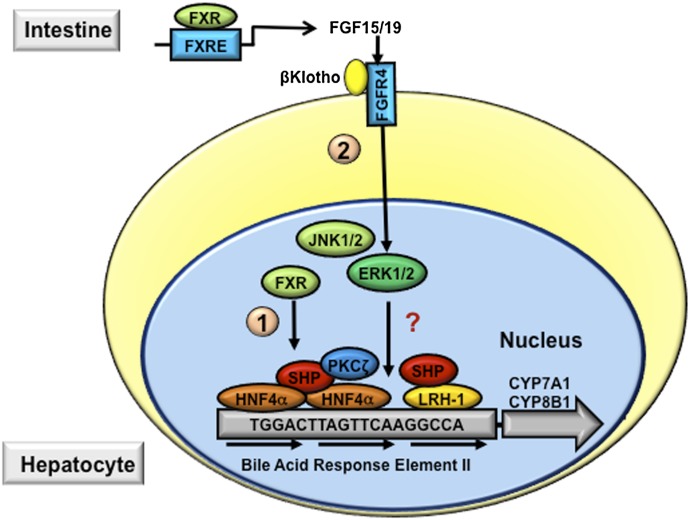Fig. 5.
Mechanisms of bile acid feedback inhibition of bile acid synthesis. Bile acid–activated signaling inhibits CYP7A1 and CYP8B1 and therefore reduces hepatic bile acid synthesis. The bile acid response element (BARE) located in the CYP7A1 gene promoter contains AGGTCA-like direct repeats. HNF4α and LRH1 bind to the BARE and stimulate CYP7A1 gene transcription. In hepatocytes, bile acids activate FXR, which induces the repressor SHP. SHP interacts with and represses the transactivating action of HNF4α and LRH, a process that involves the recruitment of corepressor complex and chromatin remodeling enzymes (indicated as pathway 1). In the intestine, bile acid–activated FXR induces FGF15 (FGF19 in humans), which binds and activates FGFR4 on the hepatocytes. FGFR4 activates intracellular signaling pathways, such as ERK, protein kinase Cζ (PKCζ), and c-Jun N-terminal kinase (JNK), which leads to the repression of CYP7A1 gene transcription (indicated in pathway 2).

